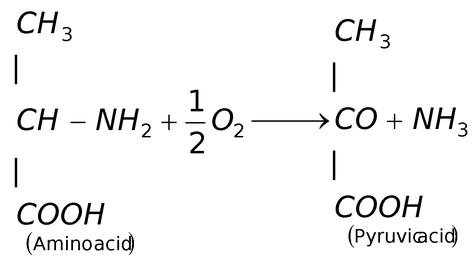Physiology of Excretion.
Excretory System of Class 11
Physiology of Excretion.
Major nitrogenous excretory substance in frog, rabbit and human is urea, i.e. these are ureotelic animals. The excretory physiology in these animals may be considered under two phases, viz urea synthesis and formation and excretion of urine.
(i) Synthesis of urea in liver : Urea is formed in liver by two processes.
(a) Deamination
(b) Ornithine cycle
(a) Deamination : The amino acid is oxidised using oxygen. This result in removal of the amino group (NH2) and leaves pyruvic acid. the pyruvic acid can enter the Krebs cycle and be used as a source of energy in cell respiration. The amino group is converted to ammonia (NH3) during deamination. Deamination is also known as oxidative deamination.

With the help of a number of enzymes and energy of A.T.P. two molecules of ammonia are combined with CO2 to form urea according to the following cycle.
(b) Ornithine cycle (Kreb-Henseleit cycle) : In liver one molecule of CO2 is activated by biotin and combines with two molecule of NH2 in the presence of carbamyle phosphate synthatase enzyme (C.P.S.) and 2 ATP to form carbamyle phosphate and one molecule of H2O release. Carbamyle phosphate react with ornithine and form citrulline. Citrulin combines with another molecule of ammonia and form arginine.
Arginine is broken into urea and arnithine in the presence of an enzyme arginase and water.

Liver cells, thus, continuously remove ammonia and some CO2 from blood and release urea into the blood. Kidneys continuously remove urea from the blood to excrete it in urine.
- Introduction of Excretory System
- Types of Nitrogenous Excretion
- Metabolic waste and Excretory Organ of Animals
- Excretory System In Mammals
- Physiology of Excretion.
- Mechanical Part of Excretory System
- Renin - Angiotensin System
- Defect/Diseases of Excretory System
- Exercise 1
- Exercise 2
- Exercise 3
- Exercise 4
- Exercise 5
- Exercise 6









